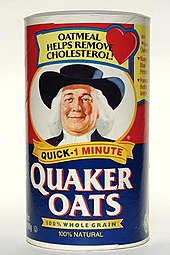So apparently M&Ms has retired its spokescandies after FOX News host Tucker Carlson complained they weren’t fuckable enough:
Woke M&M’s have returned. The Green M&M got her boots back, but apparently is now a lesbian maybe? And there’s also a plus-sized, obese Purple M&M…
M&M’s will not be satisfied until every last cartoon character is deeply unappealing and totally androgynous, until the moment you wouldn’t want to have a drink with any one of them. That’s the goal. When you’re totally turned off, we’ve achieved equity. They’ve won.

In the Reiter’s Block household we only eat sugar-free transgender M&M knockoffs.
So I really think it’s time we talk about our corporate mascot kinks. What housewife or latent homosexual hasn’t wanted the Brawny Paper Towel Guy to appear outside their kitchen window? (As of 2017, there’s also the lipstick lesbian version, thanks to Georgia-Pacific’s #StrengthHasNoGender campaign.)
Thirsty holes fan fiction just writes itself, am I right?
Every morning, like a good autistic, I eat the same thing for breakfast: a two-egg omelet and Quaker Oatmeal with soy milk. I got to talking with my equally filthy-minded family about the important questions: Who is the Quaker Oatmeal man and can he get it?
According to the website Pop Icon, his name is Larry and he was redesigned in 2012 to be slimmer and more youthful than the fellow we remember from our childhood cereal canisters.
While many have thought the Quaker man was designed after William Penn, Quaker has stated he was chosen due to the Quaker faith projecting “the values of honesty, integrity, purity, and strength.”
Looking pretty good for a guy who made his debut in 1877, Larry was America’s first registered trademark for a breakfast cereal (thus saith Wikipedia). In 1965, a new advertising slogan was introduced: “Nothing is better for thee, than me”.

Come to Daddy…
Pop Icon will lead you down the rabbit hole of researching other classic mascots’ names and backstories. For instance, did you know Cap’n Crunch liked to “sail the milk sea” with a mermaid girlfriend?
![]()
“Magnolia Bulkhead”…wasn’t she on RuPaul’s Drag Race?
Another staple of our household diet, 90-second microwaveable rice packets, no longer bear the smiling face of “Uncle Ben” since the 70-year-old brand changed its name to “Ben’s Original” during the anti-racist reckonings of 2020. Aunt Jemima was retired by parent company Quaker Oats in 2021 for the same reason. The brand is now called “Pearl Milling”. The website Organic Authority explains the offensive stereotypes behind these characters:
The use of the term “Aunt” (and, for that matter, the “Uncle” on “Uncle Ben’s,”) wasn’t familial. Rather, it was a term used for elder slaves that often worked in homes instead of the fields. Using the word “aunt” and “uncle” in place of “Mrs.” or “Mr.” lowered their status with their masters.
The Aunt Jemima brand is now mostly known for its syrup, but it started out as a quick-rising flour, mainly used for pancakes and biscuits. Its popularity exploded, and by 1915 it was one of the most well-recognized logos in the country. It even changed trademark laws to help protect its iconic mascot. Early versions of the Aunt Jemima flour packaging included paper doll cutouts for children that showed Jemima and her family barefoot in old, tattered clothing with an option to make them over in nicer outfits as part of the rags to riches story, further elevating the white savior narrative. Their success only came at the hands of the white founder and customers.
“The character of Aunt Jemima is an invitation to white people to indulge in a fantasy of enslaved people — and by extension, all of Black America — as submissive, self-effacing, loyal, pacified and pacifying,” Michael Twitty, culinary historian and author of “The Cooking Gene,” wrote for NBC News. “It positions Black people as boxed in, prepackaged and ready to satisfy; it’s the problem of all consumption, only laced with racial overtones.”
I can’t argue with the need for an update of these problematic logos. But I hope the endgame isn’t to scrub all images of Black characters from advertising. Could the “Ben” on the rice package (currently not depicted at all) be redesigned as a modern role model, like a Black businessman or chef? Is it even possible, though, to create a non-stereotypical product mascot who’s a person of color, in a racist society like ours?

